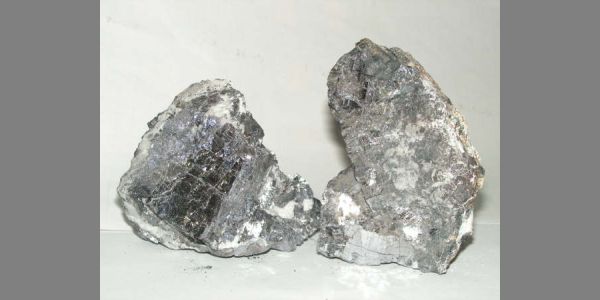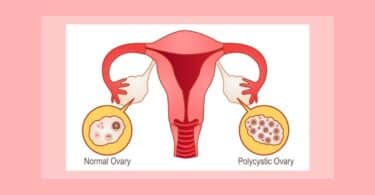Egotrophic case : “My limits are within me”
She is a forty-year-old woman osteopath. The first consultation took place on the 2nd of December 2004. She had been suffering from mouth ulcers since the age of ten and from chronic conjunctivitis for the past three or four years. She also reported suffering from constipation, with sheep dung small stools, alternating with diarrhoea, since childhood.
Mind
“I was made miserable by over-strict discipline. I can’t bear being subjected to pressure. When I was at boarding school I felt stifled and slept badly when the dormitory supervisors were nearby – I only managed to get any sleep once they had gone to bed. Those were the worst years of my life. “
I asked “What about the Ten Commandments ? “
She replied:
“I don’t know them. My God is not someone who imposes things on me. I don’t need anyone to tell me “don’t do this, don’t do that”. My limits are within me, I don’t need anyone to remind me of what I must or mustn’t do”.
Dr. Guy Loutan in his Repertoire de Thèmes et de Matière Médicale Dynamique made the study of Plumbum according to Dr Masi’s methodology and has demonstrated that the specific sensibility of the remedy is the suffering by prohibition.
This patient was an egotrophic case for Plumbum: She ignores the prohibition, there is no prohibition from anyone for her, it would be from God, because she has her limits in her. It’s a denial of the suffering.
Plumbum XM
When I saw her again on the first of February 2005, she was no longer suffering from ulcers or conjunctivitis and had no more problems with her bowel movements.
She said:
“The rebirth for which I was longing came on the tenth of December. I became as euphoric as I was when giving birth to my children. I asked my mother when I was christened and learnt that it was on precisely the same date: 10th December. I realised that I regarded my father – who had been unfaithful to my mother – as a bastard. I realised that I didn’t love my husband as I should. I went to see my father. Since then he’s taken to phoning me. I understood that he was no longer the man he used to be and that his real character might now emerge. I am no longer afraid of men and don’t think of them as bastards. Wonderful things are happening. We’re going to have a family meal with Dad and his sisters and cousins etc on the 8th of January. My father, whom I used to see as merely a progenitor, is really going to become my Dad and I think I’m soon going to be able to say to him “I love you’’.
“I now have but one aim, which is to help others find peace of mind through my profession as an osteopath. “
I saw her again on the May 31st 2005. She had completed her thesis on osteopathy – a very profound and moving text.
She said:
“My resurrection dates from the 10th of December. When I was a girl, I dreamed I was in prison for years, before finally being released. And now I am free. I haven’t come to ask for medication or to take up your time, but to thank you for your good work. I have made a giant step: when I first came to see you, my aim was just to pass my examination, but now I am cured. What I have received is inestimable: I’m now going to help others to find their way to happiness even when their lives are subject to constraints – it has become a vocation. “
I never saw her again. The remedy led the patient to discover her own vocation. This is Dr. Masi’s concept of the ideal cure.
The Methodology of Dr Masi
The great Masi’s contribution to the homeopathic community consists essentially in:
- The concept of miasmatic dynamic.
- A rational and organized methodology to study provings and clinical cases.
- Presentation of the miasmatic dynamic.
The miasmatic dynamic in Dr Masi’s idea, is the modification of the suffering resulting from an erroneous sensation happening in the interaction between the individual and his environment. A mental symptom of suffering of the primary psora type like the sensation of being unable to, or unloved or fragile, etc. creates a mental handicap against which the individual will defend himself the best he can, given his energy and the obstacles or help which he can find in his surroundings. There are therefore 3 types of reactions:
The egotrophic reaction:
The person’s first effort will be to de deny his handicap. For example, if his suffering is to feel unable, he will do everything in his power to prove his capacity, in a very compulsive way and all his life’s energy will be invested in it. This sensation of being unable, never being healed, he must always be on the look out to compensate and prove to himself and others that he is capable. This is the first level of egotrophy. If the surrounding is favourable (for example, enhancing the child’s confidence with wrong reasons: “you are a Smith, therefore you will succeed”), it encourages the egotrophic reaction.
At the 2nd level, he has no need for this poor human quality that is only laboriously acquired through exercise and experience. There is a much better, a superior faculty, super human, we call it “divine”, meaning an innate capacity, intuitive and perfect.
The egolytic reaction:
If the surroundings oppose the previous reaction or discourage the person (for example: “he is the exact copy of his uncle, nothing to be done with him”), he will tend to try and relieve himself by giving up the fight to acquire the given faculty in a self-destructive mode known as egolysis: I am unable, there is nothing I can do about it, that’s that. But in any case, encouraged or discouraged, the sickness is the same: The erroneous sensation of being unable.
The alterlytic reaction:
This is the compensation mode where the individual accuses the others of being responsible for his sufferings (for example, “it’s because my father did not encourage me that I dropped my studies”), or by making the other feel that he bears the same handicap as his own (“don’t you see that you’ve always been incapable of anything”). Here again it is the same sickness that is projected on others.
Examples of miasmatic dynamics applied to typical symptoms of well known remedies.
Example No1 Thuja
The great mental symptom of Thuja is the fragility, the fear of being torn to pieces, to lose his connections.
In egotrophy 1st level, he underlines the solidity. He can be torn to pieces, because he submits himself to certain restraints (which keep the connection between various elements). Or he proves his intellectual capacity to make a coherent synthesis of all known notions, or his capacity to maintain cohesion between people of a group.
In egotrophy 2nd level, he does not need restraints to keep his parts in unity, “he oversteps all limits”. He is the focal point around which everything must turn through the activity of his creative intelligence. He has no need for the human way of participating in the cohesion of a whole, he is the mastermind who creates a whole and maintains its cohesion, like God himself who maintains the elements of his creation in a coherent whole with his creative intelligence.
Clinical illustration of a patient with spectacular results on a serious rheumatoid polyarthritis. I was led to Thuja when he spoke with passion about his former employment as an industrial piece fitter, activity which he still has as a hobby:
“This is a lack of modesty, shamelessness to tell you about this, but I am amazed at what I have thought, written with numbers, the day before. I carry that out into reality: I take my two pieces of wood and they fit perfectly just as I had thought. And then, I am the great Good God. I used to write down for myself, and the others who carried out what I had written down. I did all the preparation. Once I had 1100 pieces of wood! And all fitted! I am sure that another fitter would have said: “he is a liar”! Well, this is my inner truth, exactly that.”
In egolysis, Thuja has lost his connections, he is torn to pieces.
Clinical illustration: A patient with a chronic depression of many years who said: “I have a sensation in the nape, like a tumour which would tear the connections: sometimes I feel a shiver, as if a connection was made and my brain starts functioning again, but it is only temporary, and then I am myself again, boosted, I no longer try and hide, I get my energy back, a presence; this makes me say that the connections are not there the rest of the time”.
Therefore we see that the depressive state hinges on connections that do not take place. The patient was cured on just one dose of Thuja, and he still remains well after 2 years.
In Alterlysis, Thuja underlines the fragility of others.
Exampe No. 2 Nitricum acidum
He cannot stand a mistake and forgives no one for his mistakes.
The subject is torn between the inflexible justice (“hatred for people who have offended him, insensitive to apologies”) and mercy (“pity”). The same thing with himself: “great pity for himself” and “aversion that people pity him”. And he has lost his capacity to think. Masi says it represents the judge who is incapable of harmonizing exact justice with mercy.
In alterlysis, he has no mercy for anyone.
In egotrophy, he can be either the inflexible judge, or the great forgiver.
These are the two extremes that allow him to negate the difficulty: the capacity of intelligence to find the right measure between justice and mercy.
In Psora, He hesitates constantly between both:
Clinical illustration: A primary school teacher who was haunted with the idea of making a mistake while marking schoolwork. It was so severe that she fell into a deep depression: “I spend an incredible amount of time marking schoolwork, to be as just as possible. I have to go back constantly. I am never finished”. This is a real OCD, which makes life unbearable. 4 doses of Nitricum acidum have freed her (stable since 2 years).
Example No. 3 : Nux moschata
It is all about the miasmatic dynamic of the sensation of ridicule. All three attitudes are well represented in the proving. One of the psoric sufferings is to be ridiculed: “She says and did many things as if she were an idiot, and the next moment she felt saddened by her conduct and said she could not help it”. He sees ridicule in her own appearance: parts of her body smaller or too big, two or three heads, etc.
Egotrophy: He uses ridicule to call attention to himself: “After having made them laugh until 1 am, I went to bed”. Therefore he denies his infirmity of being ridiculed by showing off a quality of the stand up comic.
Egolysis: He becomes ridiculous: “He makes many and extravagant acts. He seemed childish and stupid”. “Strange gestures, improper language”. “Ridiculous delusions”.
Alterlysis: The others are ridiculed: “All felt ridiculed when she recovered her memory”. “He tried to see ridicule in everything”. “Everything brings laughter”.
Clinical illustration: A case of osteoma in a dancer. Her career was in jeopardy. She was cured since over 10 years ago thanks to Nux Moschata of which she had expressed perfectly the dynamic:
“When I cannot perform a step, I amplify the ridicule of it, I see myself from outside, I overdo it, I make myself and others laugh. Before, I had the impression that the others were ridiculous, and now it backfires on me, I see myself dancing with my fat thighs and my articular limitations, and I find myself ridiculous”.
Example No 4 Drosera
Drosera has two great egotrophic symptoms:
That of having good conscience: “He did not fear misfortune, as he felt he had done the right thing”.
That of suspiciousness of others: “full of suspiciousness, as if all around were liars”.
We can deduce the psoric doubt against which he tries to defend himself: “Am I capable of doing the right thing?”… and the alterlytic projection: “Others are incapable of doing the right thing.” The proving says it explicitly: “extremely disappointed in men whose intentions are full of guile”. “He is depressed because of difficulties in life that people do to each other and to himself”.
Clinical illustration: A healed case of glomerulo-nephritis, back in 1986, which had evolved in the previous 18 months and was promised an artificial kidney in the near future. No relapse since. She was living with the idea of morally wrongdoing, with a compulsion to do her duty and overdo it, to appease her constant anguish, to avoid a punishment her imaginary mind was expecting. Her leit-motiv: rich countries exploiting the poor ones.
- Methodology to study provings and clinical cases
Following my encounter with Dr Masi, I created my own work group in 1984: AFADH (Association française pour l’approfondissement de la doctrine de Hahnemann). Its goal is to make a new reading of our old provings in their original text, with the new perspective of Dr Masi’s methodology, to better understand their depth and dynamic.
We first read them in their original language; we translate them, we study the most significant words in all their meaning with specialized dictionaries.
We classify symptoms in themes. For example, the theme of connection, and we place under this rubric all the symptoms which contain this word or its reverse (disconnection). We strive to bring up the themes that are most striking, the most original, the most unusual, the most specific, as Hahanemann requires it in Organon 153.
We then classify the symptoms again according to the hierarchy of the great human functions
Spiritual level: intellect, will, intellectual memory
Sensitive level: knowledge: sense, imagination, sensitive
memory
Affective: The 6 passions (love, hate, desire, aversion, joy, sadness), and 5 passions of the irascible (fear, audacity, hope, despair, anger)
Vegetative level: nutrition, generation, and growth
The most affected level of the human act.
Then we review again the mental symptoms and classify them according to the fact that they express the suffering itself or a form of reaction to the suffering, according to the miasmatic dynamic as explained earlier: egotrophy, both levels, egolysis, alterlysis.
Then the symptoms expressing the pure suffering are analysed according to 5 ideas that are the nucleus: sense of loss of a human faculty, nostalgia for a time when it was not lost, sense of guilt for a more or less imaginary misdeed which has merited this loss, fear of punishment for this misdeed, and justification for it.
We then come to the central hypothesis of the personal handicap of the remedy (proving) or of the diseased person (clinical case) that is only kept if all symptoms can be understood under this light, when we read the whole pathogenesis again.
From the loss of the human faculty particular to the remedy, we deduce the complementary faculty (divine), meaning the same faculty but brought to an infinite dimension. This divine and perfect faculty has been so intensely desired unconsciously (sometimes even consciously) by the patient, that he has scorned the corresponding human faculty, and having rejected it, he did not use it and therefore lost it. This is what we call the “envied divine attribute”, which is the top of the hierarchic pyramid which holds all the symptoms of the proving and those that can be deduced from the reasoning on the hypothesis; indeed this “divine attribute”, as well as the corresponding loss of the human faculty, enables one to consider all the possibilities this same remedy may express within the pyramid, the top of which is the “divine envied attribute”.
To fully understand a work as this, it would require a larger document giving the full study on a given remedy. To clarify a too abstract presentation such as this, I would like to briefly say that the study of Thuja led me to the following hypothesis:
Thuja has refused (because it’s beneath him) that the works of human intelligence be done in connection with other intelligences, even the hierarchy of which God is the pinnacle. This explains why he punishes himself in losing the solidity of all his internal and external connections.
Infinite power is what he envied: God the creator’s intelligence, who maintains solidly all the elements created in a perfect wholeness.
It is on this hypothesis that I was able to prescribe Thuja with success on both the above-mentioned cases, without having observed the habitual symptoms on which we ordinarily prescribe Thuja.
Simonne Fayeton, April 6th, 2002
Readers can learn more from these other articles:
https://hpathy.com/homeopathy-papers/goodbye-dr-masi-elizalde/
https://hpathy.com/homeopathy-papers/the-work-of-masi/
https://hpathy.com/clinical-cases/case-of-egotrophy-of-1st-degree-he-re-adjusts/





Amazing insight, thank you